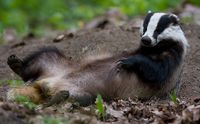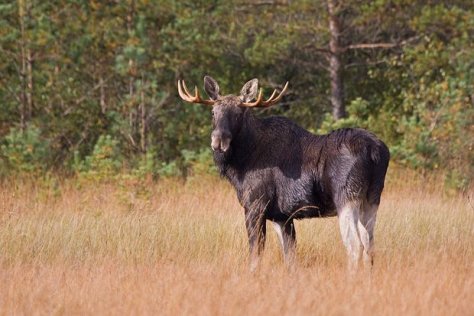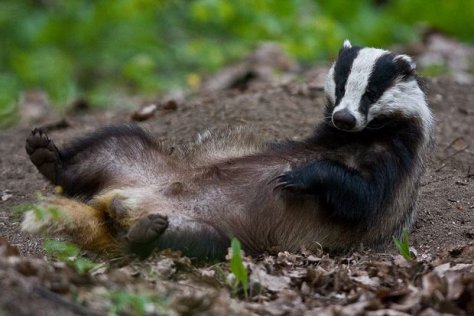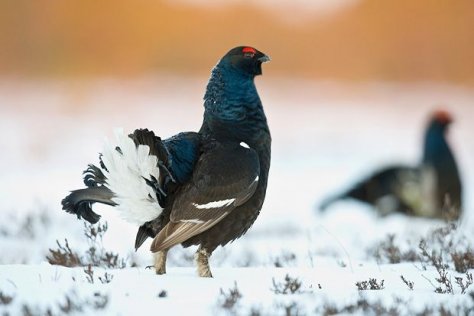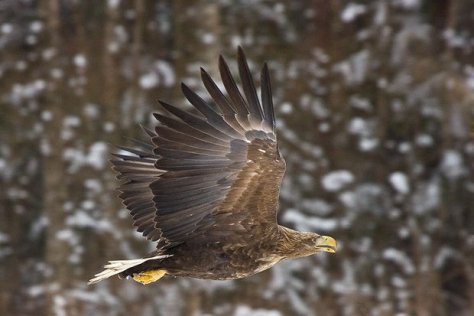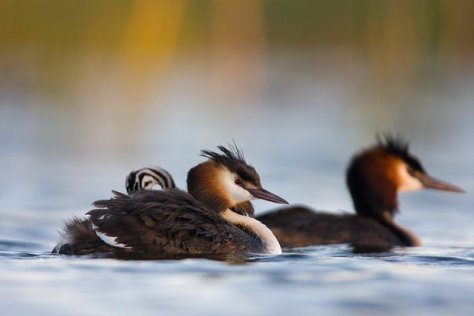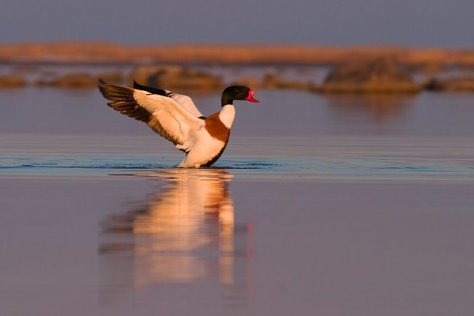Hide, an animal comes!
The first step towards seeing more on nature trips is to use camouflage clothing, for oneself as well as for one’s photo equipment. This way, it is possible to creep very close to deer or wild boars for instance. Even badgers - that obviously don’t see very well at a distance - tolerate a camouflage dressed photographer quite well. Of course the wind direction must be observed around these, and other „nosy” creatures, so that the smell of the photographer doesn’t hit their noses. I have even experienced that the otherwise very shy deer approach to investigate someone with a hood drawn over his head. Even an elk stops sometimes to stare. Human smell, however. announces danger and the friend-making quickly comes to an end.
When you are wearing camouflage clothes, it is possible to hide even behind bushes or trees; the silage balls at edges of fields sometimes offer an excellent opportunity to photograph animals feeding in the field. A camouflage net can also be set up to hide behind. They can often be found in hunting or military shops. The net can be hung up on a branch or a pole quickly. And for photographing small birds for instance it works very well.
Even better is to use special nature photo tents. From tents I have for instance photographed waterfowl, capercaillies and white-tailed eagles. But in cold weather it is difficult to resist the “call of nature”, and the natural needs seem to become abnormally strong too. But if you step out of the tent when it is light, the watching session for that time is over. Of course special “vessels” are used to solve the problem, but for many it is rather uncomfortable. I know a German nature photographer who, because of this, will not eat or drink before going into a shelter. Ascetic? Well, yes, but a personal choice.
Since then I have set up various photo hides, and I have had the luck to follow the doings of birds and animals at quite close quarters which would not have been possible otherwise. Once a young black grouse cock came within a few meters of the tent hide, to check the make of my objective lens. When he didn’t quite understand, he walked placidly on. So one can leave the birds and animals their freedom to reign in their territories, and that is good for all.
When the period of floating shelters runs into the colder part of the season, it is good advice to see that the bottom parts of your body stay warm. This way you can work in water without risking that frequent use of the floating shelter might bring rheumatic or prostate problems that may not show until years later.
This hiding game is great fun and adds spice to life with unforgettable memories. It pays to start off in the simplest way: camouflage clothing and paying attention to the wind direction. And if you can’t set up tents or build shelters, it can be worthwhile checking up commercial services that are offered. In Estonia many do so already. So hide yourself – the creatures may be on their way!
Looduskalender.ee viidakogu
| Teised kaamerad | Videod | |
| Must-toonekure videod Lõuna-Belgiast | Kurgede ränne (2008-2010) | Korallnarmik (2011) |
| Linnukaamerad Hollandis | Kotkaste ränne (2008-2010) | Kure TV (2011) |
| Raivo rännakud (2007) | Kure TV 2 (2011) | |
| Tooni rännakud (2007) | Merikotka TV (2010-2011) | |
|
|
5. aastaaja TV (2010)
|
|
| Konnakotka-TV (2009-2011) | ||
| Seire-TV (2009) | ||
| Kure-TV (2009) | ||
| Talvine kotka-TV (2008) | ||
| Sea-TV (2008-2009) |

